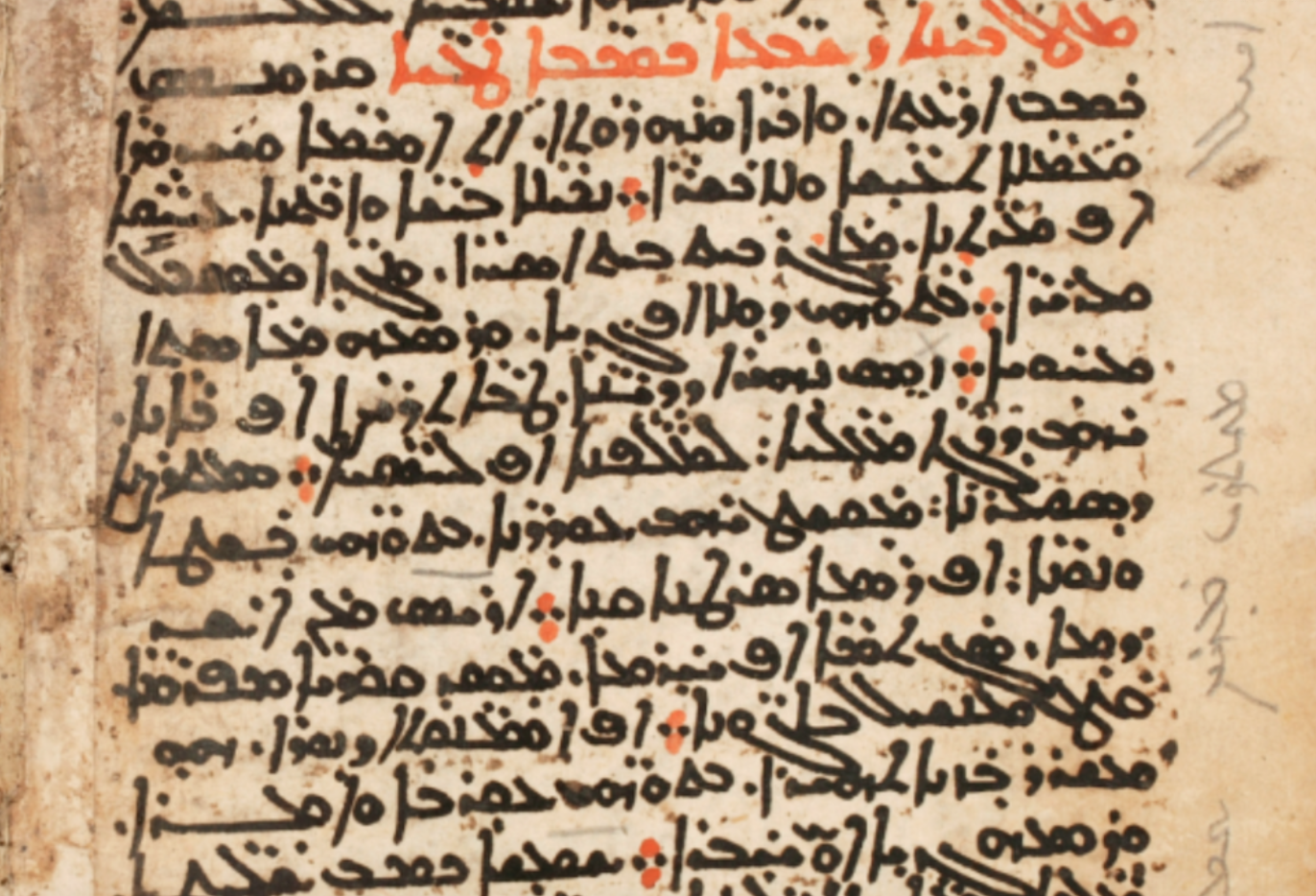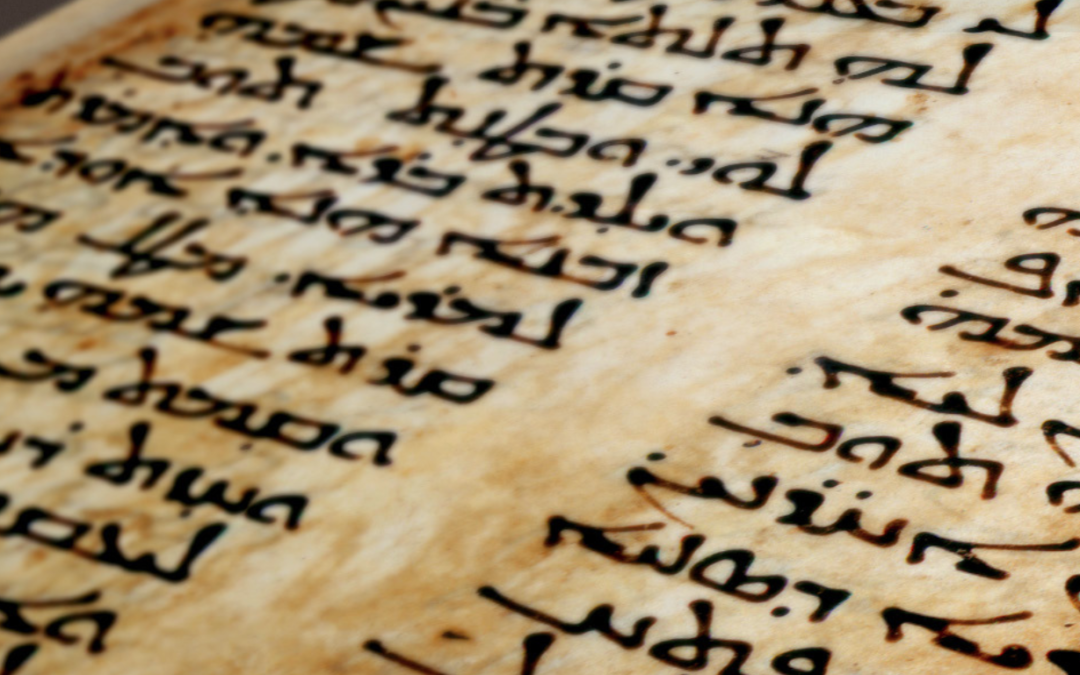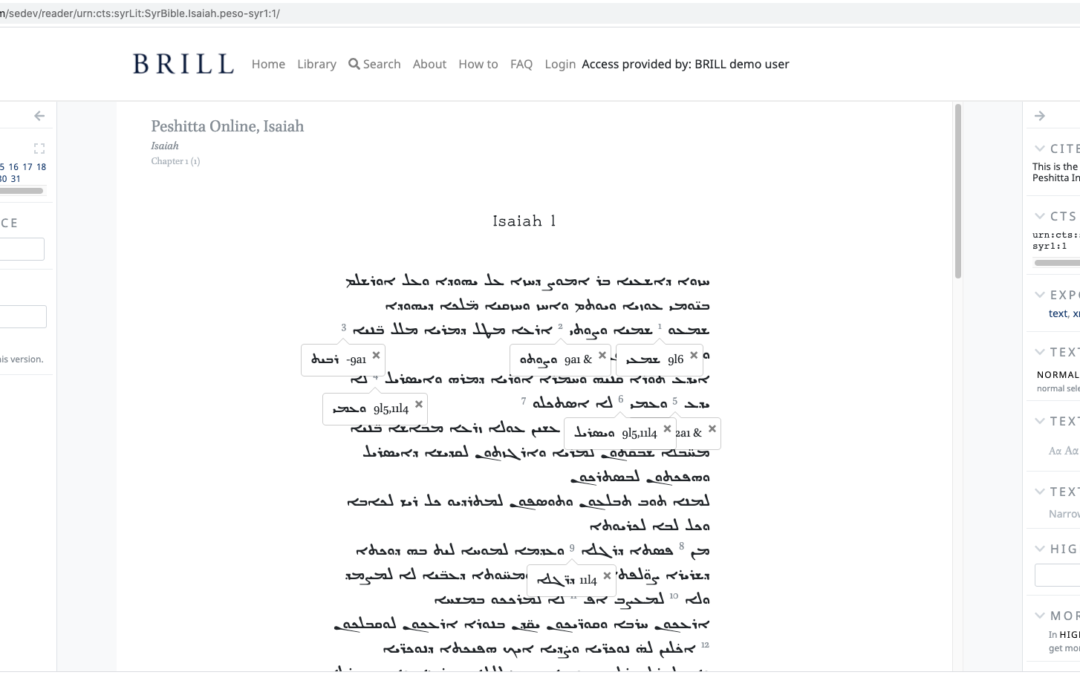
by Mathias Coeckelbergs | Sep 29, 2022 | AI, Bible, Digital Approaches to Sacred Texts, Hebrew Bible, linguistics, Peshitta, semantics, text linguistics
In this third and final blogpost for the PaTraCoSy project (for the previous blogposts, click here or here), we delve deeper into the possibilities of the Colibri Core (CC) infrastructure to study the translation patterns between Hebrew and Syriac versions of the...

by Mathias Coeckelbergs | Jan 21, 2022 | AI, Bible, Computational Linguistics, Hebrew Bible, linguistics, methodology, Open Science, Peshitta, semantics, Syriac, text linguistics
This second blogpost for the PaTraCoSy project brings us to a first discussion of the translation patterns from the Hebrew Bible into the Peshitta. Before we can address the results, we briefly describe how we constructed the model. After installation of Colibri Core,...

by Mathias Coeckelbergs | Sep 20, 2021 | AI, Bible, Computational Linguistics, Hebrew Bible, linguistics, Open Science, Peshitta, semantics, Syriac, Uncategorized
This very first blogpost seeks to report on our advancements in the PaTraCoSy (PAtterns in TRAnslation: Using COlibriCore for the Hebrew Bible corpus and its SYriac translation) project, which is funded by CLARIAH. The overall goal of this project is to use the...

by Willem van Peursen | Oct 8, 2020 | Bible, Database, manuscripts, Peshitta, Syriac
In cooperation with Brill publishers, the Eep Talstra Centre for Bible and Computer (ETCBC) and the Peshitta Foundation have prepared an electronic version of Leiden Peshitta edition, Vetus Testamentum Syriace. With the recent publication of the volume containing...






